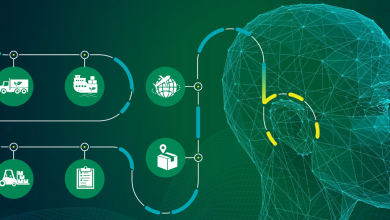
In today’s fast-paced world, the pursuit of productivity is a constant challenge for knowledge workers. Distractions, information overload, and disjointed workflows often hinder our ability to accomplish meaningful tasks.
Automation is gaining speed thanks to what I call the trifecta (Automation Anywhere, SS&C Blue Prism, and UiPath) somewhat effective marketing. Whether that marketing and results justify the price hikes on their subscriptions for a bot makes sense, I’ll leave you to question. Especially when you hear stats like I heard at Intelligent Automation Congress in Barcelona the eyewatering amounts of bot subscriptions are unused.
And of course, you’ve got an increasing amount of newcomers to the market. Using all sorts of different terms to differentiate or add dazzle to their marketing. Terms such as Integration Platform as a Service (iPaas), Intelligent Automation, Fully Managed RPA as a Service (RPAaaS), Hyper Automation, and Interoperability. Starting to get as confusing as marketers that use confusing acronyms such as CLV, UX for CRO, and WOM.

The Productivity Puzzle
A study conducted by Economist Impact reveals a stark reality for many knowledge workers. 42% of the participants reported that they typically don’t spend more than an hour on productive work without interruptions. This finding is a testament to the challenges people face in the current digital landscape, who constantly grapple with a myriad of distractions that disrupt their workflow.
For me, there is nothing worse than joining a team meeting that goes on and on and on. Especially when you have people from another department that don’t need to be there. I remember when I was advising a customer marketing team and we would spend several hours on a weekly kick-off meeting that should have been a maximum of 45 minutes.
Honestly still gives me shivers thinking the company is likely still operating the same way. And if your company is doing that on a regular basis for company-wide meetings, I don’t think you need automation to be more productive, you need to better understand how to run the business and team in place before you start automating.
One part that got my attention in the research is that the people surveyed created the estimate that the average knowledge worker loses more than five hundred hours annually to various distractions. Surprisingly, a significant chunk of this time, approximately 157 hours, is squandered on unproductive messages from workplace chat apps. It becomes evident that these chat apps, intended to streamline communication, are, paradoxically, the largest culprits when it comes to lost focus.
Thomas Reuner from HFS Research made a great point at the Intelligent Automation Congress. Went on to explain how focussing on outcomes will triumph over putting technology and automation sequences in place without knowing why you’re doing it. The same thing with GenAI and integrating any sort of hi-tech or even the people.
This reminds me of the quote, and I’m paraphrasing here, you can send a ship out to sea but without a captain, it is likely going to end up in a shipwreck compared to if it has a captain with a destination where it will more than likely reach the destination. Same analogy for getting on a plane or going on holiday. Need to know your business outcomes and where you are going.

I remember seeing an infographic doing the rounds on LinkedIn. It was about productivity apps. It was titled ‘100 best productivity apps you NEED to use’. If I were to download and use all these productivity apps, I would spend more time going from one app to the other without actually doing any bloody work.
Knowing what automation sequences to put in place along with what variety of apps or software, also known as a business or team tech stack, always needs to be a priority and consistently put under the spotlight. Not only will you be using productivity hours not utilising the full strength of half a dozen SaaS platforms, will likely be eating into your company margins.
Taking that example above about productivity apps one more time, imagine how costly that can be to a business if there are 500 people using 100 platforms that all cost somewhere in the region of £20-500 a month. That’s a lot of dolla you likely don’t need to spend.
The Power of Automation in Productivity
Automation tools encompass a wide array of software and technologies that are designed and implemented within businesses to streamline and optimize tasks. These tools can automate routine and repetitive processes, allowing knowledge workers to focus their time and mental energy on more strategic and creative endeavors.
An interesting finding in the study is the relationship between automation tools and enhanced productivity. According to the research, 79% of individuals who reported using automation tools, many of which are driven by AI, claimed to be more productive. But then how do you measure productivity? Is it by more tasks complete? Increase in company revenue? Being able to do more in less time? Maybe a mixture of all of them?
I know the below picture is specific to AI. But it can definitely also be the same for automation sequences, techniques, or processes to adopt or build into the business, what vendors to use, and what the results will potentially be by automating a task. As Olivier Gomez told me if you automate the wrong process and let it compound you can land yourself in challenges you didn’t need.

However, on the other hand (in Jon Fortt’s voice), Drew Houston, co-founder and CEO of Dropbox, emphasizes the significance of automation in addressing the productivity challenges faced by today’s workforce. He notes, “Our digital environments were never designed to be our primary workspaces. People are experiencing information overload and disjointed workflows at unprecedented levels, leading to a waste of brainpower on ‘work about work.’ AI has the potential to help people thrive by automating routine tasks, increasing productivity, and freeing up mental space so people can get back to doing the work that matters most.”
This quote highlights the core idea that automation is not just a convenience; it’s a strategic response to the evolving nature of work. And you need to think about how you’re going to do it. Is this an area you or the team have expertise in? Or is it something that you know you need to do but don’t know where to start. Because now you’ve got a challenge on your hand on who to help you implement in your business.
And these can be quite costly. By that I mean costly if you don’t use an IT consulting service that are pros in the arena. All well and good buying licenses from companies but if you don’t know how to put processes in place, which company to buy from for your needs, doing migrations of data that will more likely be needed, alongside the training, planning, and recruitment costs, you’re probably going to be forking out much more money than going to hire specialists who know what they are doing to get you returns much quicker.
Going to a company such as WonderBotz, who I honestly believe after watching them from a distance are one of the trailblazers in the arena, and leveraging their expertise ( plus getting a chance to chat with one of the sector’s best evangelists, Paula Carneiro) is a way to make it a success.
And before you think that’s a criticism, it’s not. Focus on what you’re great at. For example, if you told me to build a house. A) I don’t think it would ever be built because I’d have a mental breakdown before getting the foundations in place, and B) I’d much rather pay someone else, even though it’s an upfront cost, to do a much faster and better job who knows the ins and outs so the house doesn’t collapse on me while I’m asleep. Imagine if you asked me to build a skyscraper, fucking nightmare from hell that would be!
But I want to build on Drew’s quote quickly by giving you several ways in which automation tools can effectively boost productivity to give you a sense of what you can achieve and get out of it. And yes, these are top-level examples of the capabilities they are selling to people with the newly released products Dropbox Web Redesign, Dropbox Studio, and Dropbox Dash among others.
1. Streamlining Repetitive Tasks
Automation excels at handling monotonous, repetitive tasks that can consume a significant portion of a worker’s day. Whether it’s data entry, report generation, or file organization, automation can handle these processes with precision and speed. This frees up valuable time for employees to engage in more intellectually demanding and creative aspects of their work.
2. Reducing Errors and Enhancing Accuracy
Humans are prone to errors, especially when faced with tedious tasks. Automation, on the other hand, operates with unwavering accuracy. By automating critical processes, organizations can significantly reduce the margin of error in their operations, resulting in higher-quality work and increased productivity.
3. Enhancing Data Analysis
Automation tools, especially those driven by AI, excel in data analysis and interpretation. They can sift through vast amounts of data to extract valuable insights and trends, enabling businesses to make more informed decisions. This is a crucial element in enhancing productivity, as informed decisions lead to more effective strategies and actions.
4. Task Prioritization and Time Management
Automation tools can assist in prioritizing tasks and managing time efficiently. They can analyze deadlines, urgency, and the complexity of various assignments to help workers allocate their time and energy where it matters most. This feature aids in optimizing productivity and ensuring that the most crucial tasks are addressed promptly.
5. Enhanced Communication
Automation tools can also improve communication within organizations. Chatbots and automated messaging systems can handle routine inquiries, freeing up human employees to engage in more complex and valuable interactions. This not only increases productivity but also enhances the overall customer and employee experience.
6. Workflow Optimization
By automating various stages of a workflow, organizations can streamline their operations. This means that data, documents, and information flow seamlessly through different processes, reducing bottlenecks and delays. This optimization is a key driver of increased productivity.
7. Personalized Recommendations
AI-driven automation tools can provide personalized recommendations to users, whether it’s suggesting relevant content, optimizing ad campaigns, or recommending actions based on historical data. This personalization enhances the efficiency of individual workers and contributes to overall productivity.
The Path Forward
The study sponsored by Dropbox makes it abundantly clear that automation, powered by AI, is a game-changer in the realm of productivity. By reducing distractions, automating routine tasks, and enhancing organization, these tools empower knowledge workers to reclaim their focus and work more efficiently.
As we move into a future where the nature of work continues to evolve, the integration of automation tools will become increasingly vital. The workplace of tomorrow, or the future workforce, will demand adaptability and innovative solutions to address the challenges of information overload and fragmented workflows. Automation is my view is the linchpin in this transformation, freeing up mental space and helping individuals concentrate on the work that truly matters.
Drews vision of a “Virtual First” model, signifies the commitment of organizations like Dropbox to designing the tools necessary to thrive in the new era of distributed work. The updates and advancements in automation and productivity tools that are on the horizon are the first steps on this transformative journey.




